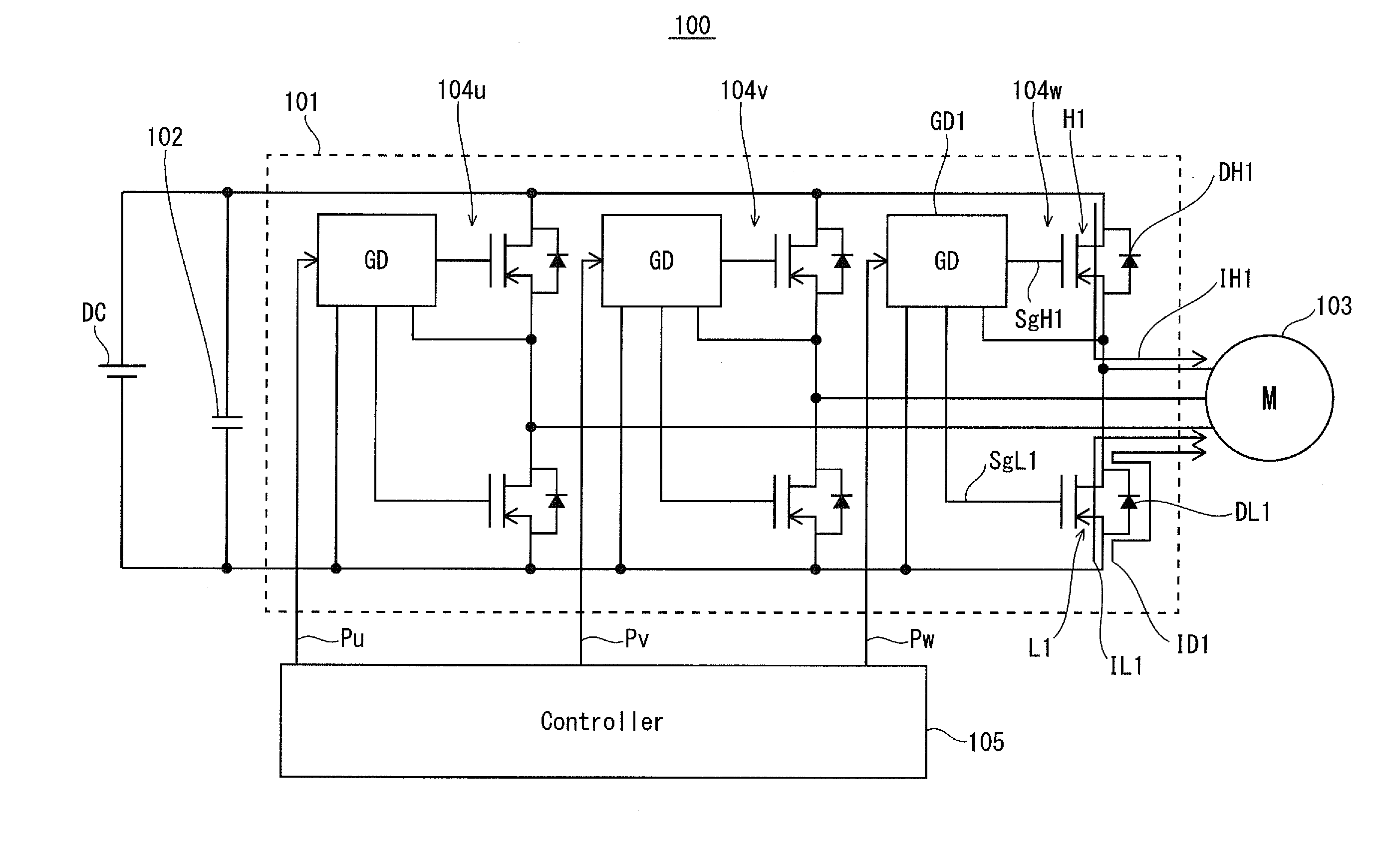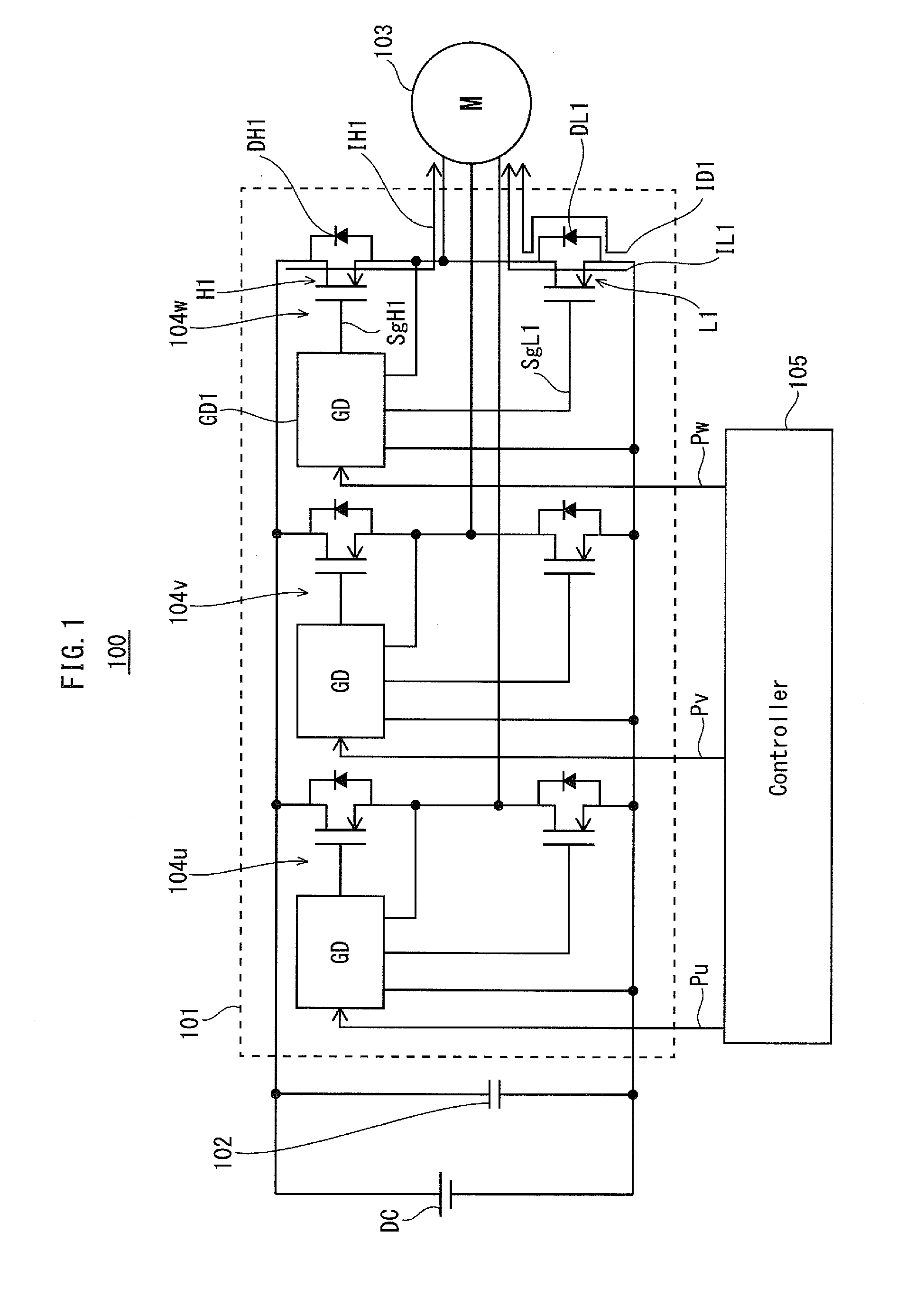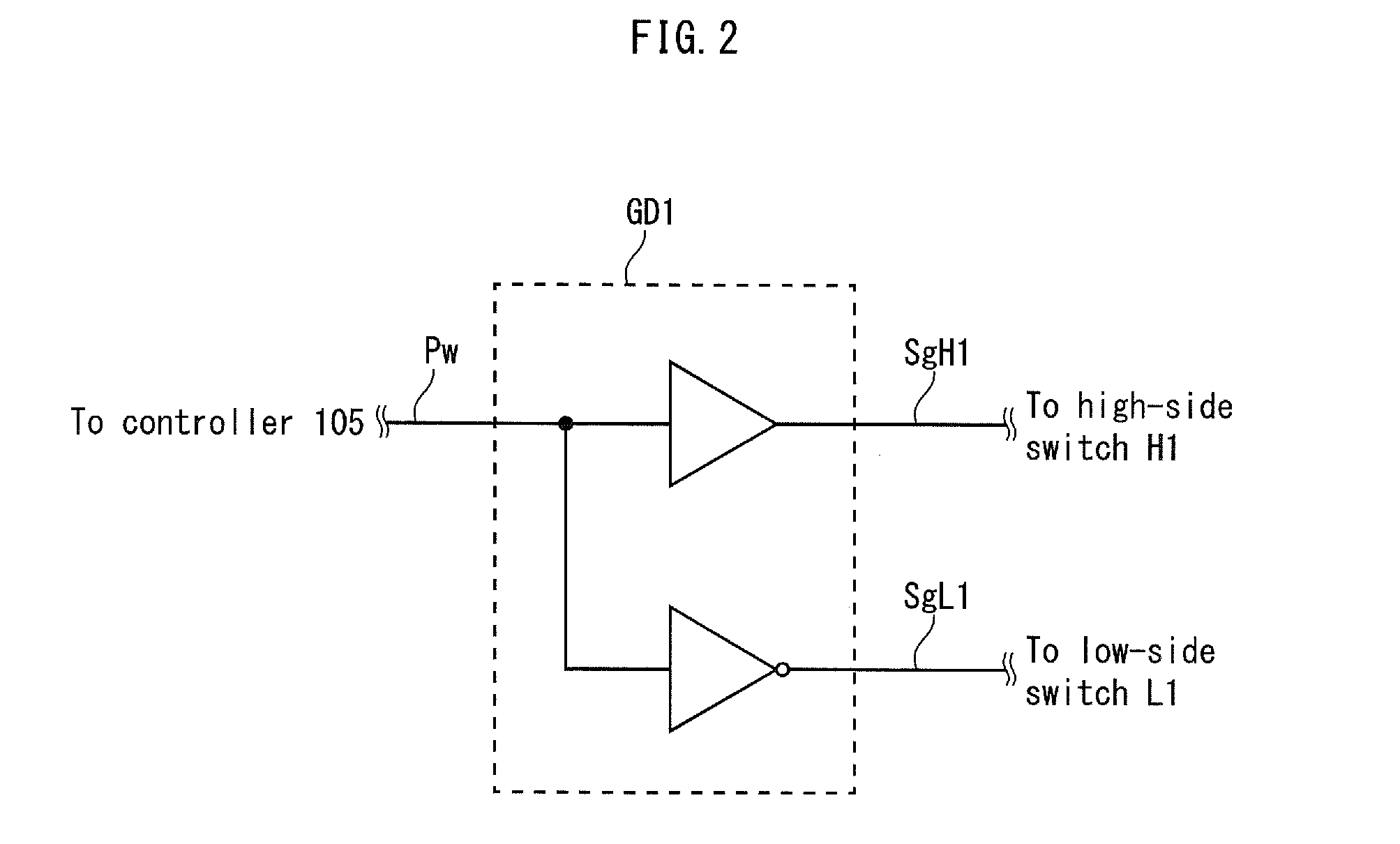Inverter
a technology of inverter and gate drive circuit, which is applied in the field of inverter, can solve the problems of complex structure of gate drive circuit, and achieve the effect of reducing switching losses and speeding up switching speed
- Summary
- Abstract
- Description
- Claims
- Application Information
AI Technical Summary
Benefits of technology
Problems solved by technology
Method used
Image
Examples
first embodiment
[0055]
[0056]FIG. 1 shows an overall structure of a load driving system 100 including an inverter pertaining to First Embodiment. The present embodiment describes a structure in which a three-phase AC motor serves as the load.
[0057]The load driving system 100 includes a direct current power supply DC, an inverter 101, a smoothing capacitor 102, a three-phase AC motor 103, and a controller 105.
[0058]For example, the direct current power supply DC may obtain a direct current by rectifying a power supply system. Alternatively, the direct current power supply DC may be in the form of a battery (representative examples include secondary batteries such as a nickel-metal hydride battery and a lithium-ion battery).
[0059]The inverter 101 converts a direct current supplied from the direct current power supply DC into a three-phase alternating current, and supplies the three-phase alternating current to the three-phase AC motor 103. The three phases, namely a U phase, a V phase and a W phase, a...
second embodiment
[0131]The following describes Second Embodiment with a focus on differences from First Embodiment. Note that the timing chart pertaining to the present embodiment is similar to the timing chart of FIGS. 4A through 4I, and is therefore omitted from the following description.
[0132]
[0133]FIG. 9 shows an overall structure of a load driving system 200 including an inverter pertaining to Second Embodiment. The load driving system 200 differs from the load driving system 100 pertaining to First Embodiment in the structure of an inverter 201, especially in the structure of switches H2 and L2. Note that constituent elements of the load driving system 200 that are the same as those of the load driving system 100 have the same reference signs thereas, and are omitted from the following description.
[0134]As with the inverter 101 pertaining to First Embodiment, the inverter 201 includes a U-phase arm 204u, a V-phase arm 204v and a W-phase arm 204w. The W-phase arm 204w includes a high-side switc...
third embodiment
[0187]The present embodiment provides a description of a gate drive circuit structured such that a short circuit current is more difficult to flow between switches.
[0188]FIG. 23A shows a circuit structure of a gate drive circuit pertaining to the present embodiment. FIG. 23B shows fluctuations in a terminal-to-terminal voltage of each switch during the switching operation. Note that the reference signs of constituent elements shown in FIG. 23A are basically the same as the reference signs of constituent elements shown in FIG. 1. Although the following description relates only to the high-side switch, the same goes for the low-side switch.
[0189]A description is now given of the switching operation performed by the switch with reference to FIGS. 23A and 23B, with a focus on charge and discharge of a gate capacitance between the gate electrode and the source electrode of the switch (hereinafter, simply “a gate capacitance of the switch”).
[0190]As shown in FIG. 23B, in an interval X, th...
PUM
 Login to View More
Login to View More Abstract
Description
Claims
Application Information
 Login to View More
Login to View More - R&D
- Intellectual Property
- Life Sciences
- Materials
- Tech Scout
- Unparalleled Data Quality
- Higher Quality Content
- 60% Fewer Hallucinations
Browse by: Latest US Patents, China's latest patents, Technical Efficacy Thesaurus, Application Domain, Technology Topic, Popular Technical Reports.
© 2025 PatSnap. All rights reserved.Legal|Privacy policy|Modern Slavery Act Transparency Statement|Sitemap|About US| Contact US: help@patsnap.com



